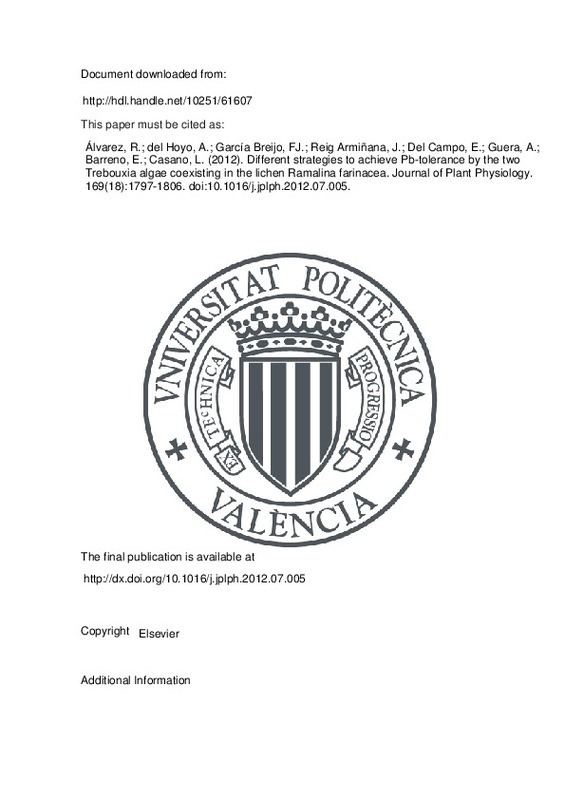JavaScript is disabled for your browser. Some features of this site may not work without it.
Buscar en RiuNet
Listar
Mi cuenta
Estadísticas
Ayuda RiuNet
Admin. UPV
Different strategies to achieve Pb-tolerance by the two Trebouxia algae coexisting in the lichen Ramalina farinacea
Mostrar el registro completo del ítem
Álvarez, R.; Del Hoyo, A.; García Breijo, FJ.; Reig Armiñana, J.; Del Campo, EM.; Guéra, A.; Barreno, E.... (2012). Different strategies to achieve Pb-tolerance by the two Trebouxia algae coexisting in the lichen Ramalina farinacea. Journal of Plant Physiology. 169(18):1797-1806. https://doi.org/10.1016/j.jplph.2012.07.005
Por favor, use este identificador para citar o enlazar este ítem: http://hdl.handle.net/10251/61607
Ficheros en el ítem
Metadatos del ítem
| Título: | Different strategies to achieve Pb-tolerance by the two Trebouxia algae coexisting in the lichen Ramalina farinacea | |
| Autor: | Álvarez, Raquel Del Hoyo, Alicia García Breijo, Francisco José Reig Armiñana, José del Campo, Eva María Guéra, Alfredo Barreno, Eva Casano, Leonardo M. | |
| Entidad UPV: |
|
|
| Fecha difusión: |
|
|
| Resumen: |
Lichen thalli are permeable to airborne substances, including heavy metals, which are harmful to cell metabolism. Ramalina farinacea shows a moderate tolerance to Pb. This lichen comprises two Trebouxia phycobionts, ...[+]
|
|
| Palabras clave: |
|
|
| Derechos de uso: | Reserva de todos los derechos | |
| Fuente: |
|
|
| DOI: |
|
|
| Editorial: |
|
|
| Versión del editor: | http://dx.doi.org/10.1016/j.jplph.2012.07.005 | |
| Código del Proyecto: |
|
|
| Agradecimientos: |
This study was supported by the Spanish Ministry of Science and Innovation (CGL2009-13429-C02-01/02) and the Generalitat Valenciana (PROMETEO 174/2008 and GVACOMP2011-205). We are grateful to the Central Support Service ...[+]
|
|
| Tipo: |
|







![[Cerrado]](/themes/UPV/images/candado.png)

